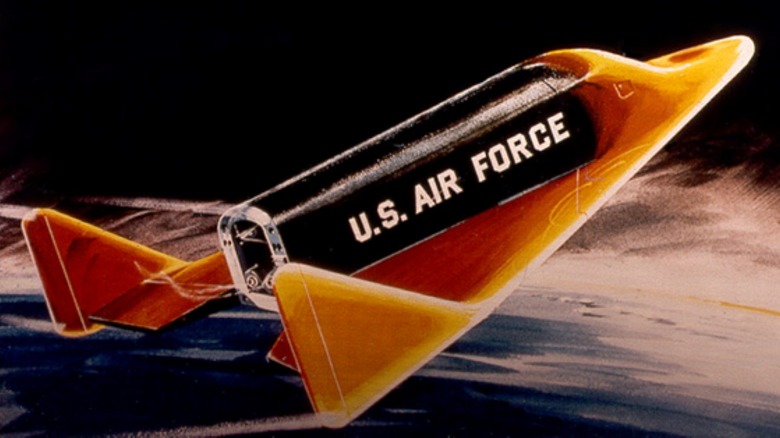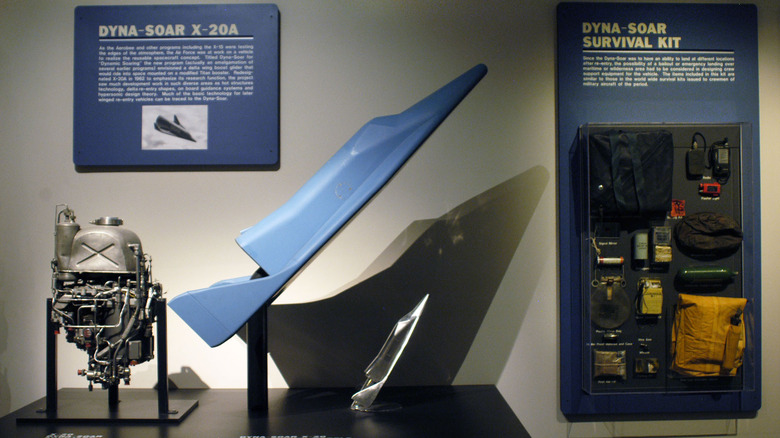The X-20 Dyna-Soar: The Air Force Space Plane With A Dark History
Space travel technology and rocketry always sit on the fine line between uses for evil and applications for the betterment of society. The same technology that can be used to ferry astronauts from across the world to a space station can alsdo be utilized to deliver a nuclear payload anywhere on earth. In fact, some of the most successful NASA missions, including the Mercury missions and the Apollo 11 moon landing, were made possible through the work of Wernher von Braun, a NASA engineer who formerly developed V2 ballistic missiles for Nazi Germany in World War II.
Similarly, Boeing's X-20 space vehicle named the "Dyna-Soar" (Dynamic Soaring) had other-than squeaky clean origins. The proposed vehicle itself dates to the late 1950s, but the original concept can be traced back to Nazi Germany. Over the course of the war, Nazi engineers were hellbent on making aircraft (spacecraft) that could reach the continental United States. Nazi scientists were successful in creating the first ever fighter jets. In the mind of Nazi high brass, the United States was the obvious next target after Europe was conquered. Fortunately, that never came to pass, but it wasn't for lack of trying. Nazi scientists at the Peenemunde Research Center, where von Braun once worked, were in the beginning stages of developing a space plane capable of dropping bombs from low-orbit.
Never saw the light of day
Boeing's design in the 1960s followed the lines of the same concept and could have been weaponized with ease given its 10,500 pound maximum payload. Verifiable details on the X-20 are murky at best as it never made it past the prototype stage, and it never actually flew. But the project came so close to being greenlit that astronauts and test pilots were actively training to fly the craft using simulators. Neil Armstrong himself worked on creating such simulators. According to Armstrong, the Dyna-Soar itself was a separate project developed by the United States Air Force and not NASA.
$410 million later and the project was scrapped. According to Boeing, the X-20 didn't really have any realistic use in combat, and, given the proliferation of nuclear-capable missiles and long range strategic bombers, it was going to be very quickly outdated even if it did see the light of day. The project was officially shuttered on December 10th, 1963, a little under six years before Neil Armstrong walked on the Moon, without the help of a space plane.
About 60 years after the program was canceled, no prototypes are known to have survived, and all that currently exist are photographs of prototypes, illustrations of what it may have looked like in a completed state, and scale models of the craft.

